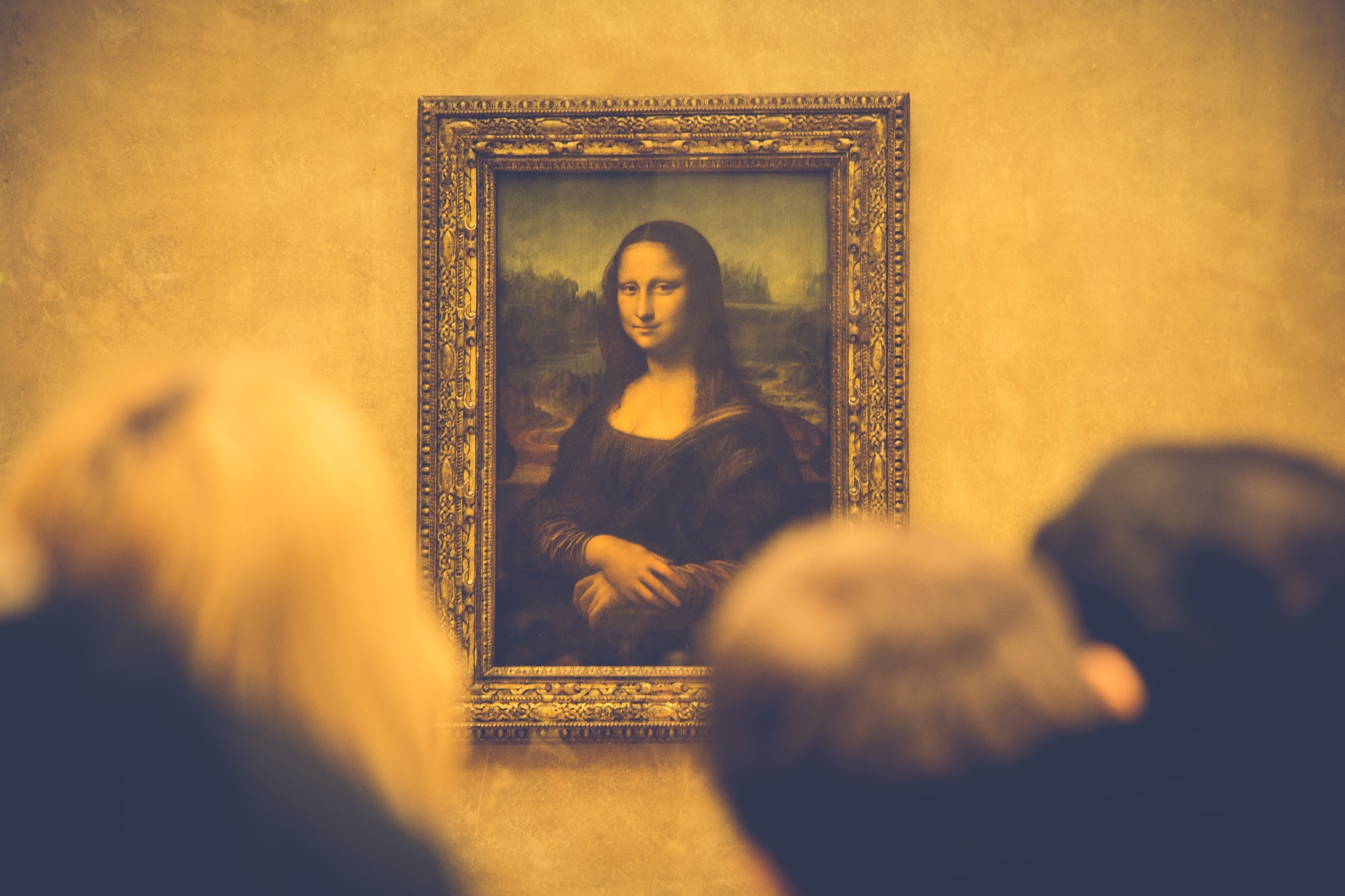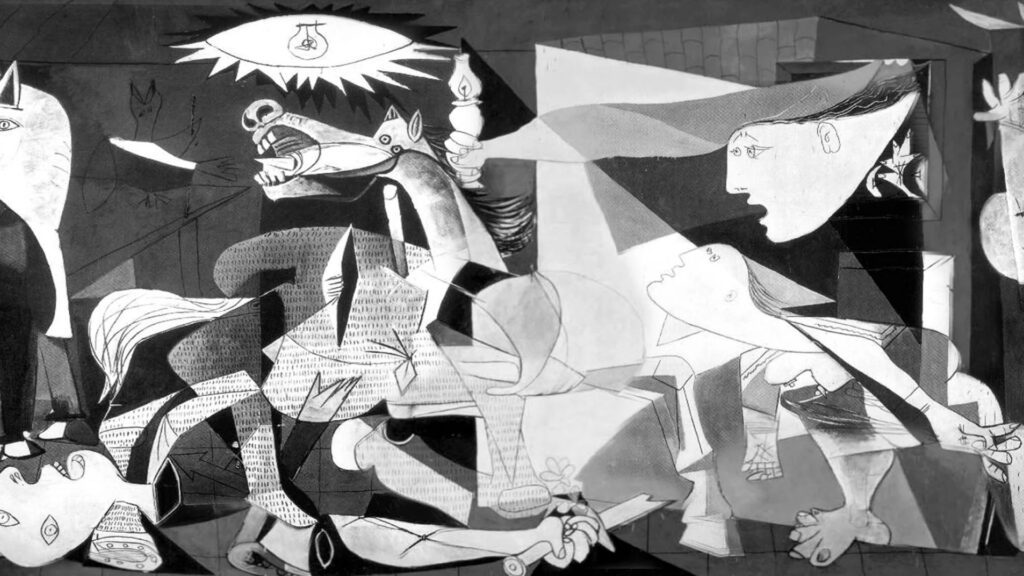
10 Famous Paintings You Have to See Before You Die
Time is money, so how should we spend it?
These are 10 famous paintings you have to see before you die, 10 masterpieces that have left an indelible mark on the collective imagination. From the enigmatic smile of Mona Lisa to the swirling starry night of Van Gogh’s imagination, each canvas tells a story, offering a glimpse into the soul of the artist and the era they lived in.
As we traverse through this curated list, we’ll not only explore the artistic brilliance behind these paintings but also touch upon their intriguing histories and the impact they’ve had on the art world. Whether you’re a seasoned art enthusiast or a curious newcomer, these ten masterpieces are an essential pilgrimage for anyone seeking to witness the transformative power of visual expression.
1. Mona Lisa – Leonardo Da Vinci
The Louvre Museum, Paris, France

Seeing the Mona Lisa is akin to encountering a living legend in the realm of art. Its enigmatic smile and masterful brushwork by Leonardo da Vinci have entranced audiences for centuries. Witnessing this masterpiece in person offers an intimate connection with a pivotal piece of human creativity and history. The subtle details, the play of light, and the mystique are truly best experienced firsthand, evoking a profound appreciation that photographs simply can’t convey. It’s a chance to stand before a cultural icon, to feel the resonance of artistic genius, and to be a part of the countless souls who’ve been moved by this singular work.
2. The Last Supper – Leonardo Da Vinci
The Convent of Santa Maria delle Grazie, Milan, Italy.

“The Last Supper” by Leonardo da Vinci is a pinnacle of artistic and cultural achievement. Its intricate composition, masterful use of perspective, and the profound emotional depth of each figure make it a cornerstone of Western art. Witnessing this iconic work in person allows you to grasp the nuances of da Vinci’s genius, from the play of light and shadow to the meticulous details of each apostle. It’s an encounter with a piece of history that has shaped centuries of artistic expression and religious contemplation. The sheer scale and presence of the painting are impossible to fully appreciate through reproductions alone. It’s a transformative experience that resonates on a deep, spiritual level.
3. Starry Night – Vincent Van Gogh
The Museum of Modern Art, New York City, New York

Seeing Van Gogh’s “Starry Night” is akin to stepping into a dreamscape crafted by a tormented genius. The swirling, tumultuous sky and luminous stars evoke a visceral sense of emotion and movement. Standing before it, you’ll feel the intensity that Van Gogh poured into every brushstroke, a testament to his inner turmoil and transcendent creativity. The texture and impasto technique are best appreciated up close, impossible to fully grasp in reproduction. It’s a pilgrimage into the mind of an artistic visionary, a chance to witness a piece of history that has left an indelible mark on the art world. Don’t miss this encounter with pure, transformative artistry.
4. The Scream – Edvard Munch
The National Museum, Oslo, Norway

“The Scream” by Edvard Munch is a visceral embodiment of existential anguish, a universal outcry frozen in time. Standing before it, you’ll feel the raw emotion emanating from the tormented figure against the vivid, swirling sky. The painting’s influence on modern art and its profound reflection of human vulnerability make it an essential pilgrimage for any art lover. The bold, swirling lines and haunting palette reveal Munch’s mastery in conveying the human psyche’s depths. It’s a rare opportunity to confront mortality and introspection through a singular artistic vision. Witnessing “The Scream” is to commune with the very essence of human experience, an encounter that lingers long after.
5. The Persistence of Memory – Salvador Dali
The Museum of Modern Art, New York City, New York

Salvador Dali’s “The Persistence of Memory” is a surreal masterpiece that defies the boundaries of time and reality. Its melting clocks draped languidly over the landscape provoke contemplation on the fluidity of existence. To stand before it is to enter a dreamscape, where the laws of physics and perception are bent. The meticulous details and the dreamlike atmosphere are best experienced in person, offering a profound connection with Dali’s eccentric genius. This painting is a testament to the power of imagination and challenges our understanding of the world. Witnessing it is an opportunity to be transported into the mind of an artistic visionary, an experience that transcends the ordinary.
6. Nighthawks – Edward Hopper
Art Institute of Chicago, Chicago, Illinois

“Nighthawks” by Edward Hopper is a cinematic tableau, a haunting slice of urban solitude frozen in time. Its stark, almost surreal atmosphere captivates with its enigmatic narrative. Standing before it, you’ll sense the palpable isolation and quiet desperation of the figures within the diner’s fluorescent glow. The interplay of light and shadow, along with Hopper’s meticulous attention to detail, beckon you into this nocturnal world. Seeing it in person offers a unique opportunity to fully absorb the painting’s atmospheric tension, impossible to replicate through reproduction alone. “Nighthawks” is an immersion into the human condition, an artful meditation on urban alienation that lingers long after the viewing.
7. American Gothic – Grant Wood
Art Institute of Chicago, Chicago, Illinois

Grant Wood’s “American Gothic” is an iconic representation of American identity and rural life. The stoic figures, standing resolute in front of their Gothic-style home, encapsulate the essence of Midwestern fortitude. Witnessing it in person allows you to appreciate the meticulous detail and Wood’s astute portrayal of character. The painting’s influence on American art and its reflection of a bygone era make it a cultural touchstone. It offers a window into the heart of America, evoking a sense of nostalgia and pride. “American Gothic” is a testament to the power of visual storytelling and a must-see for anyone seeking to understand the roots of American culture.
8. The Kiss – Gustav Klimt
Austrian Gallery Belvedere, Vienna, Austria

Gustav Klimt’s “The Kiss” is a transcendent celebration of love and sensuality, a symphony of gold and intricate patterns that enraptures the viewer. Standing before it, you’ll be immersed in the intimate embrace of the figures, their forms entwined in a shimmering tapestry of passion. The painting’s opulent detail and Klimt’s unique blend of symbolism and ornamentation are best appreciated up close, an experience that goes beyond mere visual aesthetics. “The Kiss” is a masterpiece that transcends time, capturing the essence of human connection and desire. To witness it in person is to be enveloped in a radiant manifestation of love’s enduring power, an encounter that resonates deeply with the soul.
9. Guernica – Pablo Picasso
Museo Reina Sofía, Madrid, Spain

“Guernica” by Pablo Picasso is a searing indictment of the horrors of war, an emotional tour de force that demands witness. Standing before it, you’ll feel the anguish and despair emanating from the fractured forms and tortured figures. The painting’s colossal scale and Picasso’s raw, visceral expression of suffering are best experienced in person, leaving an indelible mark on the viewer. It’s a powerful reminder of the human cost of conflict and an impassioned call for peace. To see “Guernica” is to confront the depths of human tragedy and the enduring need for empathy and understanding. It’s an encounter that transcends art, leaving a profound imprint on your conscience.
10. The Garden of Earthly Delights – Hieronymus Bosch
Museo del Prado, Madrid, Spain

“The Garden of Earthly Delights” by Hieronymus Bosch is a mesmerizing journey into the complexities of human desire and morality. Its intricate, fantastical scenes unfold like a surreal tapestry, offering a window into the collective imagination of the Renaissance era. Standing before it, you’ll be entranced by the vivid detail and enigmatic symbolism, revealing new layers of meaning with each gaze. The painting’s colossal size and Bosch’s unparalleled imagination are best experienced in person, allowing you to immerse yourself in its otherworldly narrative. It’s an encounter with a masterpiece that challenges conventions and invites contemplation on the boundless intricacies of human existence.
These pieces may seem so out of reach, either physically or because of their legendary status, as to be unattainable. But that’s all changing, thanks to the power of technology, and a group of art and finance experts working out of Manhattan’s financial district at a company called Masterworks.
Masterworks’ art investing platform is transforming and democratizing the art market, allowing anyone to collect and actually invest in masterpieces by artists like Picasso, Banksy, Basquiat, and more. They’ve already offered over 300 masterpieces ranging from six-figures to eight-figures in value. (Across Masterworks’ first 282 qualified offerings (not exited), the average offering amount was $3,003,300.) However, Masterworks members can invest in shares starting as low as $20 per share.
It’s finally possible to build a diversified portfolio of famous artworks at a fraction of the typical cost of buying whole artworks. Additionally, through October 2023, Masterworks has exited – or sold – 16 of their works. They’ve all recorded positive returns and provided over $10 million in profits to investors (net of fees).*
*[Please note: All investing activities involve risks and art is no exception. Risks associated with investing through the Masterworks platform include the following: Your ability to trade or sell your shares is uncertain. Artwork may go down in value and may be sold at a loss. Artwork is an illiquid investment. Costs and fees will reduce returns. Investing in art is subject to numerous risks, including physical damage, market risks, economic risks and fraud. Masterworks has potential conflicts of interest and its interests may not always be aligned with your interests.
Liquidation timing is uncertain. Expenses and fees are listed in our Offering Circulars. Note: Fees are 1.5% per annum (in equity), 20% profit share, and certain expenses are allocated to the investment vehicle. Investors should review the offering circular for a particular offering to learn more about fees and expenses associated with investing in offerings sponsored by Masterworks. Masterworks will receive an upfront payment, or “Expense Allocation” which is intended to be a fixed non-recurring expense allocation for (i) financing commitments, (ii) Masterworks’ sourcing the Artwork of a series, (iii) all research, data analysis, condition reports, appraisal, due diligence, travel, currency conversion and legal services to acquire the Artwork of a series and (iv) the use of the Masterworks Platform and Masterworks intellectual property. No other expenses associated with the organization of the Company, any series offering or the purchase and securitization of the Artwork will be paid, directly or indirectly, by the Company, any series or investors in any series offering. For more information, see “IMPORTANT DISCLOSURES” at Masterworks.com/cd
This post was sponsored by Masterworks.com/cd